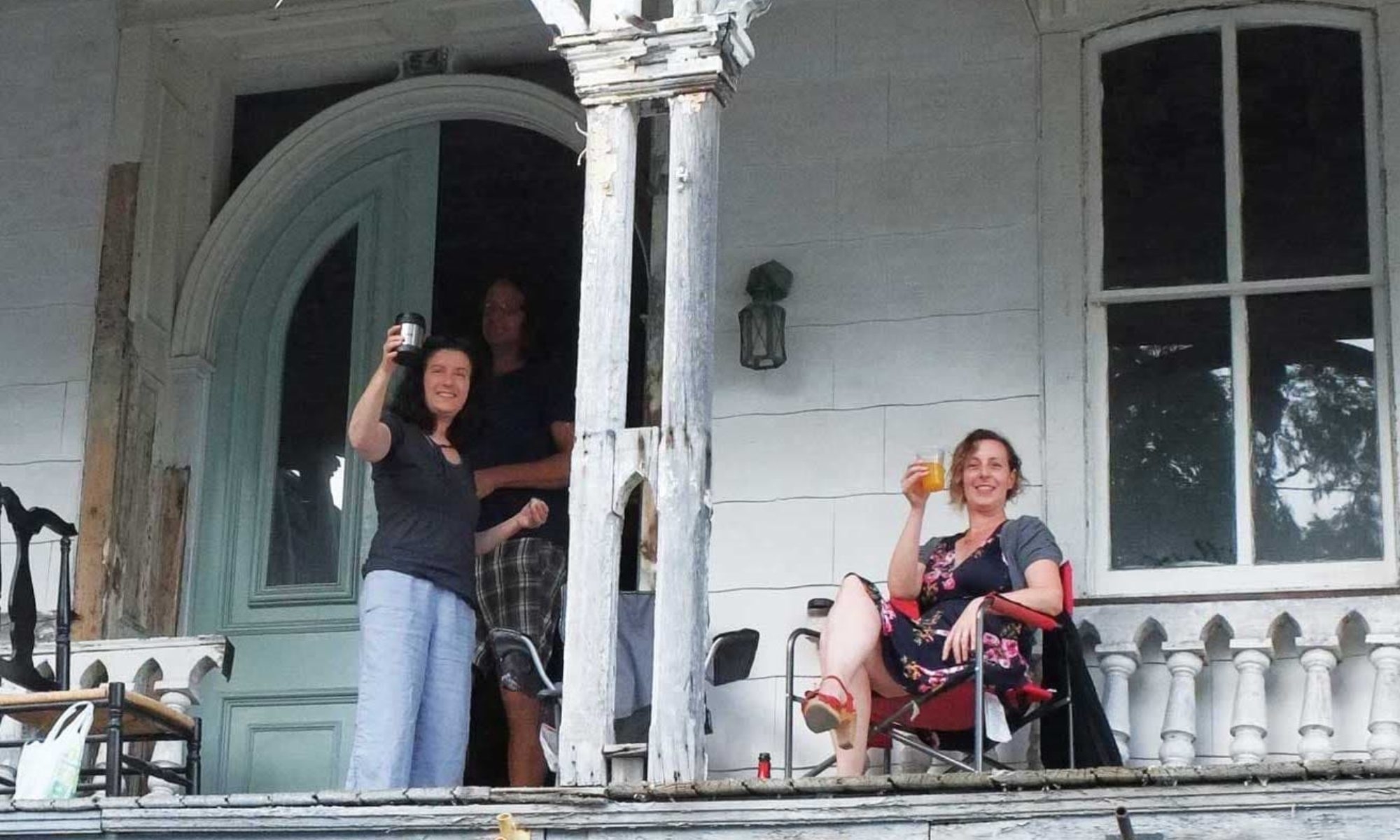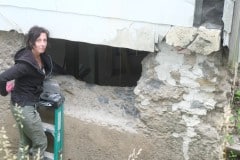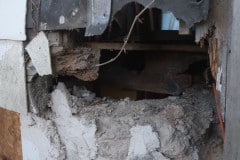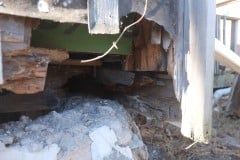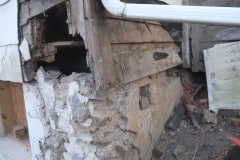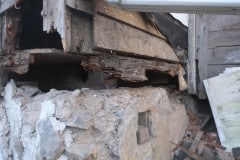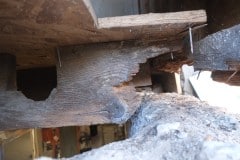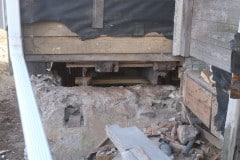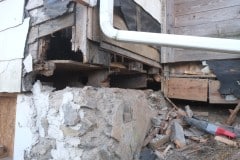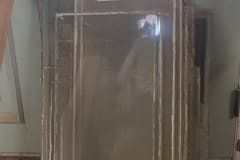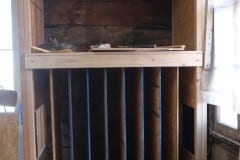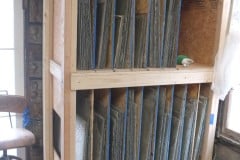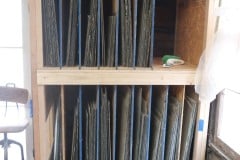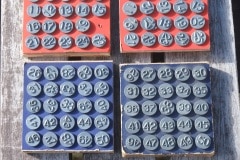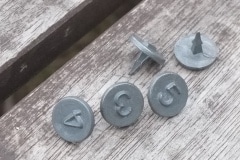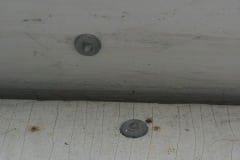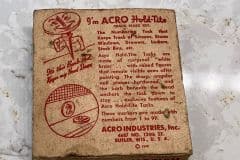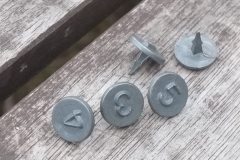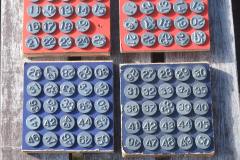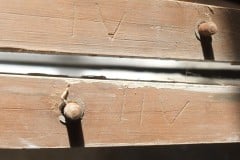There has alway been something a bit funky about the rear right corner of our house. Looking at it, it was pretty obvious that someone had been up to some f#$%&ery† in the past. Today was the time to remove the band aid and find out what was going on – a few months ago I really wouldn’t have wanted to know, but now it needs to be addressed. Once we start framing inside and adding insulation, access to these areas gets harder.
So in the photos you can see, going horizontally, that we have tile, tile, tile, some odd bit of concrete painted white, probably to make it look like tile. By the way beneath the tile is wooden sidings or cladding. So what was going on here was that the sill plate, a 5x”10″ beam that rested on top of the masonry wall (to which floor joists are connected to etc.) had rotted away. Two likely reasons for this, firstly the single gutter from the roof was vertically above this so any blockages or leaks would have sent water running down the outside walls. Secondly this is below where all the bathrooms were so any leaks would make their way down to the sill plate.
After removing the funky concrete it was obvious that the sill plates were totally rotted and in places completely missing.
If the beams weren’t so rotted and crumbling I would have been nervous about removing them. Anyway I took the risk and the house is still standing. It might not be obvious from the photos but the ends of the floor joists were so rotten that the ends don’t even meet the walls. As a precaution I did put screw jacks under the joists.
Currently we have about 7 linear foot of the house which is unsupported. We’ll be addressing this asap. We’ll also need to rebuild a lot of the corner wall but we’ll have to wait until temperatures are warmer.
Indoors we started on making some shelves for all our wavy glass. For years we’ve had piles of it dotted around the house and every now and again, we would end up breaking the odd pane. Some of these panes are pretty big at 3’x3′ and this glass is getting rarer and rarer so I’m glad it’s out of harms way.
The shelves took longer than we thought to make but they are pretty heavy duty and the vertical dividers can be removed should we want some workshop shelving in the future. Our workshop has become pretty cluttered so it was nice to have a good tidy up.
† Excuse the langauge.
